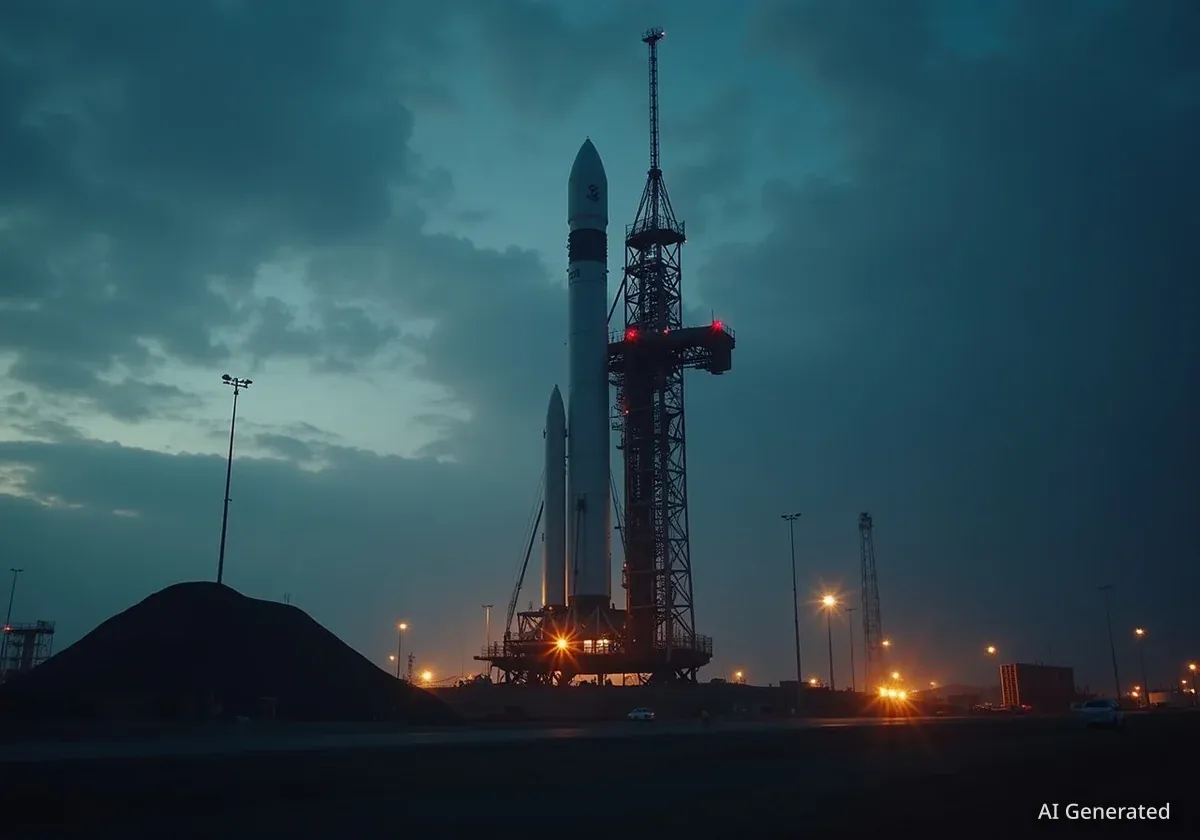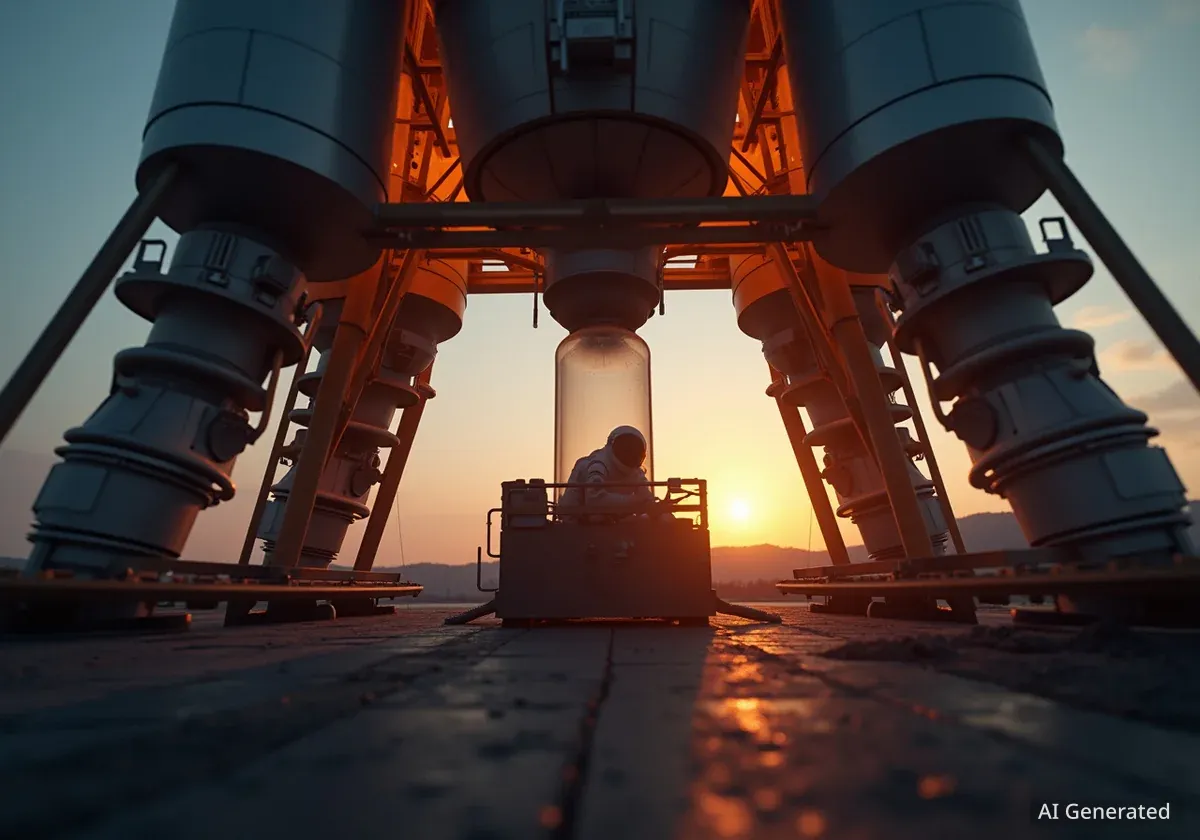SpaceX is significantly increasing its launch activity on Florida's Space Coast, with a target of more than 100 Falcon rocket launches this year. In parallel, the company is developing major new infrastructure at Kennedy Space Center and Cape Canaveral to support its next-generation Starship vehicle, signaling a strategic shift towards higher-frequency spaceflight.
Key Takeaways
- SpaceX is on pace to conduct over 100 Falcon rocket launches from Florida in the current year, a new record for the company.
- New launch infrastructure is actively under construction to accommodate the larger and more powerful Starship rocket.
- The company is working with the Federal Aviation Administration (FAA) and the U.S. Air Force to manage increasingly crowded airspace.
- The long-term vision is to operate spaceports with an efficiency model similar to that of major international airports.
Record Launch Cadence for Falcon Rockets
SpaceX has established a rapid and reliable launch schedule from its Florida facilities. The company's goal of exceeding 100 Falcon launches in a single year from the Space Coast represents a substantial acceleration in operational tempo. This high frequency is primarily driven by the deployment of its Starlink satellite constellation and missions for commercial and government clients.
This increased activity solidifies Florida's position as a global hub for space access. According to industry observers, the consistent pace of launches demonstrates the maturity of the Falcon 9 rocket system and SpaceX's streamlined ground operations. Each launch contributes to a growing ecosystem of aerospace activity in Brevard County.
Launch Statistics
The target of over 100 launches in a year from Florida alone nearly doubles the cadence from just a few years ago. This demonstrates the success of SpaceX's reusable rocket technology in reducing turnaround times and costs.
Preparing for the Starship Super Heavy
While the Falcon family of rockets remains the workhorse, SpaceX's focus is also firmly on the future. Significant construction is underway to build the necessary ground support for Starship, the company's fully reusable super heavy-lift launch vehicle designed for missions to Earth orbit, the Moon, and Mars.
Don Platt, an aerospace professor at Florida Institute of Technology, has confirmed that new infrastructure development is visible at both Kennedy Space Center and Cape Canaveral. This includes the construction of massive launch towers and support systems specifically engineered for the scale of Starship, which stands taller than any previous rocket.
Falcon vs. Starship
The Falcon 9 is a partially reusable rocket that has become the standard for commercial and government satellite launches. Starship is a much larger, fully reusable system designed for deep space exploration and carrying significantly heavier payloads. It represents the next phase of SpaceX's long-term ambitions.
The Airport Model for Space Operations
To manage the projected increase in launch traffic, SpaceX and regulatory bodies are rethinking how spaceports operate. The company has stated that future launch sites must function more like busy airports, capable of supporting multiple launches per day from different providers.
This model presents complex logistical and safety challenges. The primary goal is to minimize disruptions to commercial air traffic while ensuring the safety of every operation. Achieving this requires close coordination between launch providers and federal agencies.
"Future launch sites will need to operate more like airports, supporting multiple launches per day from multiple providers while minimizing disruptions to air traffic," a company representative stated, highlighting the need for a new operational paradigm.
This vision requires advanced air traffic management systems and new regulatory frameworks to handle the high volume of vehicles transiting through national airspace.
Federal Collaboration on Airspace Management
The safe integration of frequent rocket launches into the National Airspace System is a top priority. SpaceX is actively working with its federal partners, including the Federal Aviation Administration (FAA) and the U.S. Air Force, to develop new protocols.
In recent months, both agencies have held meetings to discuss the specific operational requirements and potential impacts of Starship launches from the Space Coast. These discussions cover a range of topics, including:
- Defining safe launch and re-entry corridors.
- Developing dynamic airspace management techniques.
- Ensuring public safety on the ground and in the air.
- Coordinating with military and civilian air traffic controllers.
The success of this collaboration is critical to enabling the next generation of commercial spaceflight from Florida. As more companies plan to launch from the region, the development of a safe and efficient system for airspace management becomes increasingly important for the entire industry.





